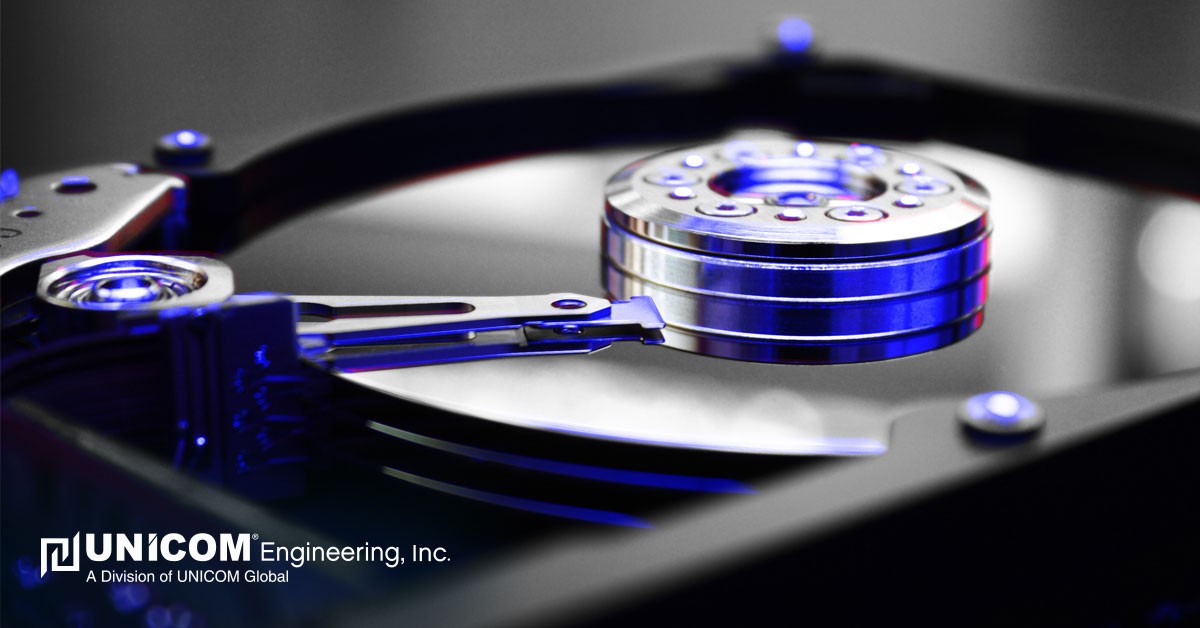UNICOM Engineering is committed to protecting your brand and bringing it to life by providing your desired out-of-box experiences. Our team can help create a server solution that will stand out in a crowd, whether you already have your own design elements or are looking for a place to start. Our full range of branding services allows you to deliver your solution with your own logo and style quickly and cost-effectively. These services can also include complete design consulting and even custom fabrication.
What is a Grown Defect?
When an application platform is manufactured, it is subject to small imperfections. Hard Disk Drives (HDDs) have long been the victims of imperfections that can cause a drive to malfunction. HDDs can be littered with manufacturing variations, adversely affecting their ability to retain and represent data stored within. Unfortunately, the faults a drive has when it is first made are just the beginning. They grow over time, and the term commonly used to refer to them is known as grown defects.
Before HDDs became “self-managing” and able to bypass their defects, each affected sector was usually identified by the manufacturer and indicated on the side of the hardware. This enabled the purchaser to manually direct their hardware to avoid using the damaged zones so the HDDs would function as intended. The burden of purchasing a new disk with flaws caused buyers to select HDDs with the shortest defect lists.
As software progressed to include built-in controllers that worked intelligently, defect lists were a thing of the past. HDDs managed themselves without requiring external inputs to remap over affected sections. Naturally, the practice of publishing the affected sectors subsided as the internal software replaced the role of manually inputting sector locations.
That said, HDDs still suffer from grown defects, though their impact on daily operations for all levels of the consumer is limited. The trick to understanding how these grown defects affect the way an HDD operates comes from self-healing software. As each newly grown defect is discovered, the system remaps to avoid that defect; therefore, there is minimal data on exactly how many of these grown defects can cause total unit failure.
To further support our customers, UNICOM Engineering was interested in acquiring more data to better understand just how these grown defects accumulate over time and if that contributes to unnecessary repairs or servicing.
What Happens in Defect Management?
Although grown defects have been around for just as long as HDDs, research or understanding regarding how they're formed and the effect on overall function has not been thoroughly performed.
While the manufacturer often sets the threshold for acceptable limits of grown defects at around 40 per unit, our experts at UNICOM Engineering decided to compare that with the data on HDDs that they have received from customers. It was noted that a few defects here and there were normal, but that number fell far short of 40. In fact, on average, the UNICOM Engineering team recorded about two or three defects per unit. The team then decided that an official study was necessary to better understand these flawed units.
UNICOM Engineering's Study Criteria
According to information gathered by the UNICOM Engineering team, an HDD would be rejected and replaced if it had more than five grown defects off the manufacturing line or more than 40 grown defects after being returned by a customer after already being in use. It's important to note that most returns from customers were for servicing, not due to actual unit failures. Regardless, if HDDs were scanned and detected to have more than 40 defects, they would be replaced.
Our Testing of Grown Defects
An increase ingrown defects during the Passmark phase, a set of rigorous tests that new hardware undergoes for certification to be shipped to various locations around the globe, would automatically trigger an extra 24 hours of Passmark drive-specific testing.
If an additional growth was detected during that 24-hour period, the unit would be considered a failed drive and removed from customer circulation. If no additional grown defects were detected during that 24-hour period, the drive would be given a passing grade, serviced, and returned for usage.
UNICOM Engineering tested over 4,000 units, with a total of nearly 27,000 HDDs. In that period, only 19 grown defects were observed. 12 of those units had less than 5 defects and passed the 24-hour retest period. Six of those units failed the criteria due to having more than 5 defects on their drive. After initially displaying just one grown defect, a single unit failed the 24-hour observation test when a second grown defect was observed upon the second examination.
The testing described above, along with the solid data it has produced, benefits UNICOM Engineering customers with an established pass/fail criterion that has been specifically designed to ensure customers receive high-quality units. This also allows units to be screened out, eliminating them from circulation with a more solid understanding of how they could potentially fail. It also enables us to work with our partners to agree on manufacturing standards that are both manageable and beneficial to the end-users.
What is the Future of Defects in Solid-State Drives?
It's easy to understand a future where traditional HDDs are phased out by solid-state drives (SSD). While that future is appealing, we are currently limited by the nature of SSDs with their capacity and a finite number of alterations. While we wait for the technology to catch up with our vision of the future, ensuring that our customers have access to the best data storage available remains a number one priority for our team at UNICOM Engineering. This study demonstrates why we at UNICOM Engineering genuinely believe in our title as a value-added partner. See how we help our clients by viewing our website or engage with us today either by telephone (800) 977-1010 or email at sales@unicomengineering.com.
